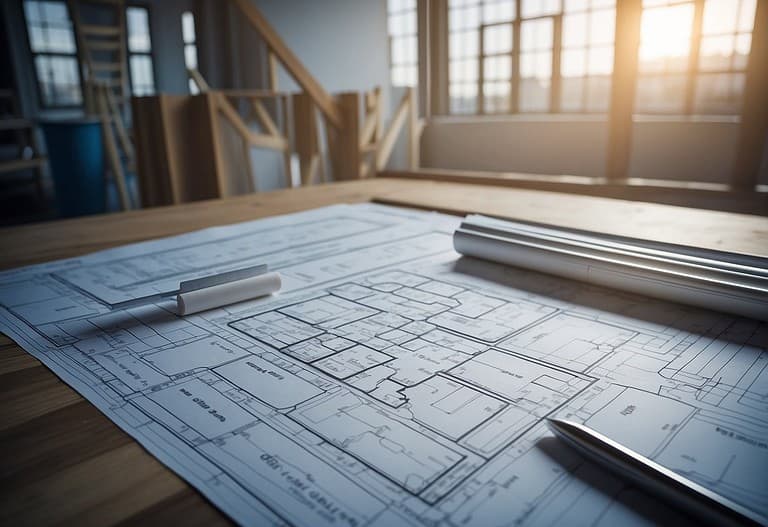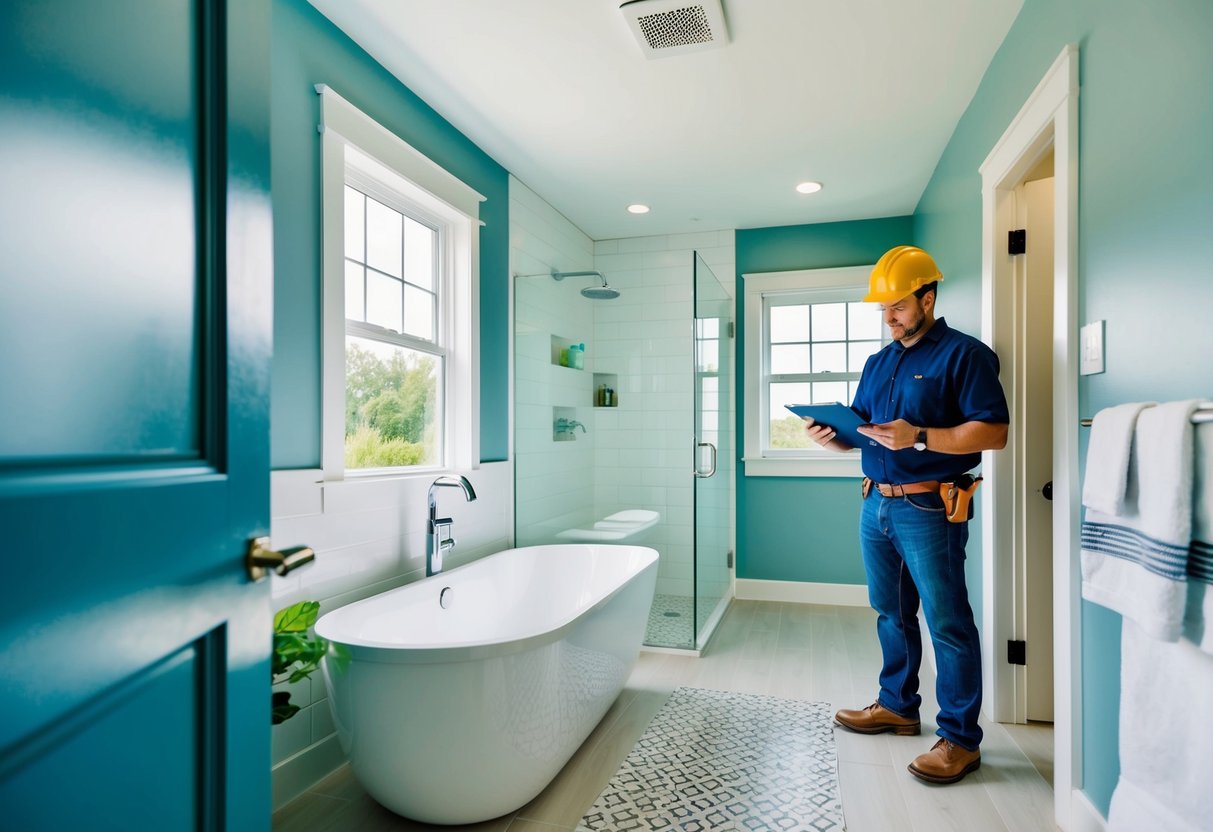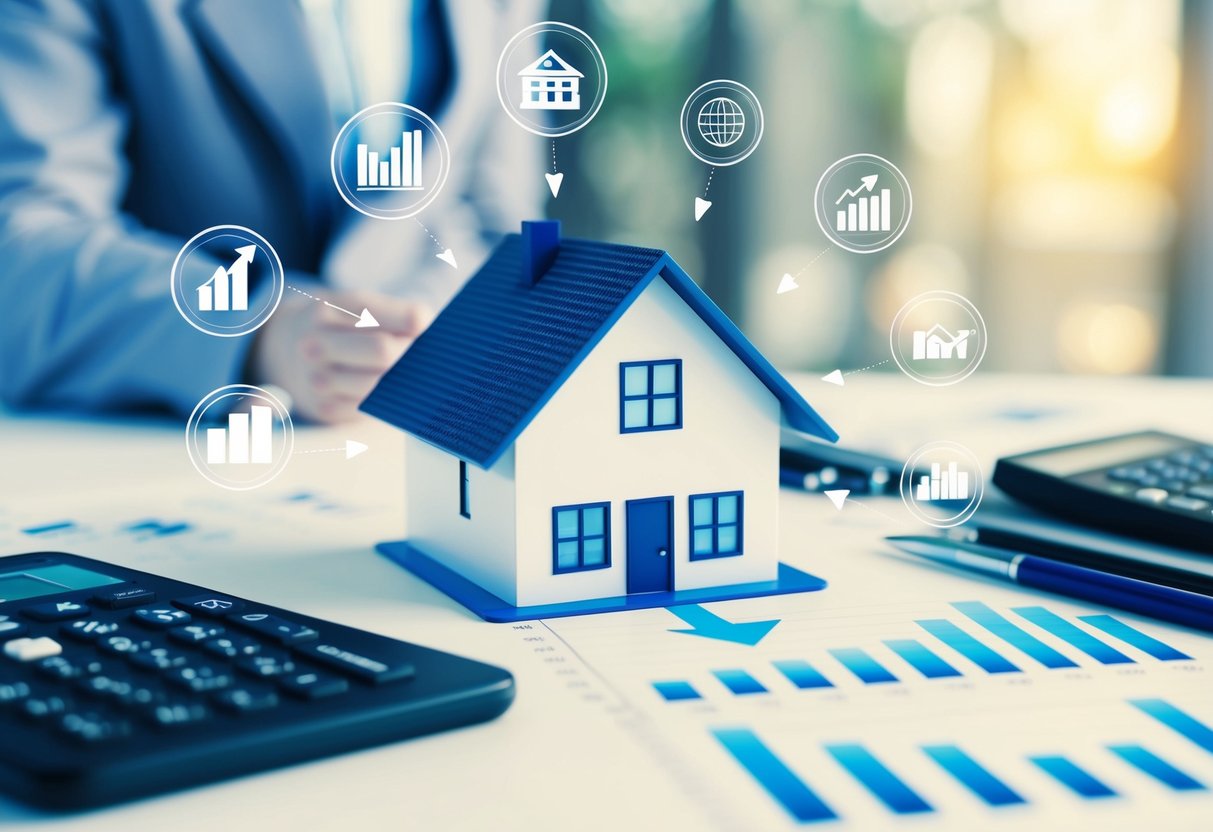Building a duplex in Australia is an enticing option for property owners looking to maximise the value of their land. A duplex, which consists of two dwelling units on a single lot, offers the benefit of generating rental income or accommodating extended family. The cost of building a duplex can vary significantly based on several factors such as location, design preferences, materials chosen, and other site-specific considerations. Typically, these costs include expenses for land acquisition, obtaining necessary permits, and construction itself.

Cost considerations for constructing a duplex should also factor in pre-construction activities such as demolishing existing structures if necessary, town planning approvals, and potential community impact fees. The variance in cost across different regions reflects the diverse market conditions and the individual needs of property owners. In cities like Sydney and Melbourne, costs can range from $600,000 to $1.2 million and $650,000 to $1 million respectively, while in Canberra, they may fall between $550,000 and $1.1 million.
Key Takeaways
- Building a duplex in Australia can provide rental income or family housing options.
- Costs vary nationwide and include land, design, permits, and construction.
- Additional expenses may arise from pre-construction and customisation needs.
Understanding Duplexes

In considering the construction of a duplex in Australia, prospective homeowners encounter a variety of configurations and benefits. These considerations are vital in determining the suitability and desirability of duplex properties.
Types of Duplex Homes
A duplex refers to a residential building comprising two units with separate entrances and living spaces. In Australia, there are typically two main types:
- Side-by-side Duplex: Two residences are adjoined by a common wall and are positioned next to each other. Each side operates independently, often mirrored or identical in layout.
- Up-and-down Duplex: This configuration is characterised by one unit placed over the other, with separate entrances for each. It is especially common in urban areas where land space may be at a premium.
Each type has its own implications for privacy, accessibility, and land use, with the choice largely influenced by the owner’s preferences and site constraints.
Advantages of Building a Duplex
Building a duplex offers several advantages, which makes it an attractive option for many.
Investment Potential: Duplexes can be a sound investment as they allow owners to earn rental income from one unit while living in the other, or rent out both for double income.
Cost-Efficiency: The shared common wall can reduce construction and land costs compared to building two separate dwellings.
Flexibility: Duplexes provide flexibility for families to live close to each other while maintaining privacy, as well as the opportunity to downsize or accommodate changing family dynamics.
This housing option provides homeowners and investors with practicality and potential for returns, all within a contained footprint.
Pre-Construction Considerations

Before commencing the construction of a duplex, important facets such as the acquisition of land, detailed design and planning, and obtaining the necessary legal approvals are pivotal to the project’s success.
Land Acquisition
Acquiring land is the first physical step in the journey of building a duplex. Prospective builders should consider the location carefully, with emphasis on local council zoning regulations which dictate land use. In cities like Sydney, Melbourne, and Canberra, where demand is high, one must account for the competitive nature of the market. The choice of land will not only affect the cost but also the design possibilities of the duplex.
- Location Consideration: Proximity to amenities, public transport, and schools.
- Zoning Regulations: Compliance with the local council’s development controls.
Design and Planning
The design phase is crucial for it lays down the blueprint for the construction. It should accommodate local building codes and the specific requirements of the project. Hiring a qualified architect or designer who understands the complexities of duplex construction in an Australian context can make a significant difference. Moreover, the design must cater to the demands of the target market, whether in Sydney’s bustling neighbourhoods or Melbourne’s serene suburbs.
- Professional Assistance: Engage architects familiar with duplex designs.
- Market Suitability: Ensure design appeals to the target demographic.
Legal Requirements and Permits
Before building can commence, the project must have all the requisite permits. This involves submitting detailed plans to the local council and waiting for approval. The process can be intricate, especially in major cities like Sydney, Melbourne, and Canberra, where regulations are stringent. Adhering to zoning laws and understanding the extent of what’s permitted will streamline this stage. It is prudent to budget both time and money for potential delays or required changes.
- Council Approval: Plans must be submitted and approved by the local council.
- Compliance: Ensure all designs meet local building regulations and codes.
Building a New Duplex
Building a new duplex involves a significant investment and thorough planning. One should choose a reputable builder, consider the costs of materials and labour, and understand the construction process to ensure a smooth development.

Choosing a Duplex Builder
Selecting the right builder for a duplex is critical. Prospective homeowners should research builders who have experience with duplex projects and check their credentials. They must ensure that the builder is licensed and insured in Australia. The builder’s past projects and client testimonials can offer insights into their reliability and the quality of their work.
Materials and Labour
The cost and availability of building materials can greatly affect the overall budget. When constructing a duplex, common materials such as concrete, bricks, timber, and steel are used. Labour costs should also be accounted for, which will vary based on the complexity of the design and the qualifications of the hired contractors and subcontractors.
Average Building Materials Costs:
| Material | Cost Range |
|---|---|
| Concrete | $65 – $85 /m³ |
| Bricks | $700 – $1,200 /k |
| Timber | $5 – $8 /linear m |
| Steel | $1,600 – $2,400 /t |
Note: Prices are indicative and may vary based on market conditions and location.
Construction Process
The construction process for a duplex is intricate, involving various stages from site preparation to final inspections. Architects and contractors collaborate to ensure the design meets local building codes and client expectations. Subcontractors may be employed for specialised tasks such as electrical work, plumbing, and painting.
Key Construction Stages:
- Site preparation and foundation laying
- Structural framing and roofing
- Installation of plumbing, electrical, and HVAC systems
- Internal fit-out and finishes
- Final inspections and occupancy permits
Throughout this process, ensuring proper communication between the homeowner and the builder is pivotal to the project’s success.
Costs Explained

When considering the cost to build a duplex in Australia, one must account for the land purchase, construction expenses, and additional outlays. These financial requirements vary significantly based on location, design choices, and other critical factors.
Land Costs
Land costs are a significant part of the overall budget for building a duplex. In Australia, these expenses fluctuate depending on the region and proximity to urban centres. Purchasing land also involves transactional costs such as:
- Stamp duty: Varies by state
- Conveyancing fees: Legal costs associated with transferring land ownership
- Transfer fees: Paid to the state government for registering the change of ownership
- Agent’s fees: If a real estate agent is used in the transaction
Construction Costs
Construction costs typically include fees for materials, labor, and design. They differ based on the complexity of the duplex design and the quality of materials used. An itemised list of key components includes:
- Materials: Brick, concrete, timber, etc.
- Labour: Costs for skilled tradespeople
- Design: Architectural and engineering fees
- Survey and reports: Site analysis, environmental impact assessments
- Permits: Local government fees for development approval and building permits
Cost estimates for various cities can range from approximately $550,000 in Canberra to $1.2 million in Sydney.
Additional Expenses
Additional expenses may not always be immediately apparent but can impact the total cost. They include:
- Demolition costs: If the land has existing structures that need removal
- Maintenance costs: Initial upkeep may be required, depending on development
- Hidden costs: Often unexpected but can arise from complexities during construction
It is essential to allocate a portion of the budget for unforeseen expenses to safeguard against any financial overruns.
Investment Insights

When considering building a duplex in Australia, investors seek to understand the market dynamics, benefits of dual occupancy, and potential rental yields to ensure a wise investment.
Market Analysis
The real estate market in Australia has seen fluctuations that influence investment decisions. Specifically, the average cost to build a duplex varies from AUD $550,000 to over AUD $1.3 million, reflecting factors such as property location and building specifications. Current trends suggest a steady demand for duplex properties, attributing to their affordability compared to detached homes in urban areas.
Dual Occupancy Advantages
Building a duplex offers distinct advantages for investors. The chance to obtain two rental incomes from a single block of land enhances rental yield potential significantly. Moreover, duplexes can cater to a wide demographic, from small families to downsizers, broadening the rental market. Investors also find value growth opportunities, especially in high-growth suburbs.
Rental Considerations
Investors must evaluate the rental yield—the ratio of annual rental income to the property’s cost. Duplex properties typically offer high yields due to their dual occupancy nature, meaning the investment is often more cash flow positive compared to single-family homes. It is important to consider vacancy rates and tenant turnover, which can vary by property location. Locations close to amenities, transport, and schools typically attract long-term tenants.
Customisation and Flexibility

When building a duplex, homeowners enjoy a degree of customisation and flexibility that can significantly influence the overall cost. Choices regarding design modifications and potential future developments play a critical role in the planning stage.
Design Modifications
The design phase of a duplex build offers flexibility in terms of size and design. Custom floorplans allow for the inclusion of various amenities tailored to the homeowner’s preferences, such as a spacious kitchen, multiple bedrooms, and bathrooms. Homeowners may opt for additional units to maximise rental income or accommodate extended family. However, the complexity of the design correlates with the cost—more intricate designs often incur higher expenses.
- Example Floorplan Adjustments:
- Add a study room or home office
- Include a walk-in wardrobe or ensuite in the master bedroom
- Design an open-plan living and dining area for a more spacious feel
Considering Future Developments
Subdividing the property can offer long-term flexibility by allowing homeowners to sell or rent out a portion of their land. Moreover, a knockdown rebuild approach may be used for a comprehensive customisation, enabling homeowners to design from the ground up. While this can be a substantial investment, it provides an opportunity to modernise existing properties and adapt them for future developments, such as evolving family needs or technological advancements.
- Subdivision Considerations:
- Check zoning regulations and obtain necessary permits
- Plan for separate utility connections for future ease of sale or rental
By prioritising customisation and flexibility, homeowners can tailor their duplex to their current needs while also planning for the future, making it a smart and adaptive housing solution.
After Construction

Once a duplex is built, the owner’s focus shifts to its maintenance and the decisions regarding occupancy of the units. The choices made here are pivotal in ensuring the property’s longevity and return on investment.
Maintenance and Upkeep
A duplex typically comes with shared common areas that necessitate regular maintenance. The owner should budget for routine upkeep costs which are usually lower compared to detached homes due to the shared nature of the structure. For example, a two-story duplex may have common exterior spaces, and here is a simple breakdown of potential yearly maintenance costs:
- Landscaping: $500 – $2,000
- Exterior painting: $1,500 – $5,000
- Roof inspection and repair: $200 – $1,000
Townhouses, which can be part of a duplex arrangement, may incur similar expenses. Low maintenance costs are an attractive feature of duplex living, but these costs can fluctuate depending on factors like the age of the building and the materials used in construction.
Occupancy Options
Duplex owners have the advantageous option to live in one unit and rent out the other, providing a steady stream of income that can offset mortgage payments. Here’s how each option might look in financial terms:
- Owner-occupied unit: Savings on rent and maintenance pooled from rental income.
- Rented unit: Rental income range of $300 – $800 per week, varying with location and unit features.
Apartments within a duplex are appealing to renters seeking a balance of privacy and community, making them a viable residential investment. Strategically, occupancy arrangements can maximise an owner’s financial return while maintaining a quality living environment.
Selecting Professional Services
When embarking on a duplex building project, selecting the right professionals is crucial for both the construction phase and the financial management of the endeavour. It involves rigorously evaluating prospective contractors and advisors to ensure they possess the necessary credentials, experience, and trustworthiness.
Finding Quality Contractors
A critical step in building a duplex is securing a reliable contractor. They should not only have a valid licence and sufficient insurance but also a solid track record of completed projects. One can start by consulting various online reviews and exploring local referrals. After compiling a list of potential builders, it is imperative to assess their expertise, specifically in duplex projects, to validate their suitability for the task at hand. When dealing with architects and builders, it’s important to review their portfolios and verify their understanding of local building codes and regulations.
- Checklist for Selecting a Duplex Builder:
- Confirm valid licensing and insurance coverage.
- Look at past project portfolios specific to duplex builds.
- Read client testimonials and online reviews.
- Discuss previous projects and request referrals.
Financial and Legal Advisors
As with the construction aspect, obtaining professional financial guidance can be instrumental. A qualified financial advisor can offer insights on the most advantageous financing options and guide potential tax benefits of property development. It is important they have experience in real estate investment to provide tailored advice. A licensed financial advisor should map out a clear financial pathway for the project, considering various risk factors and market conditions. Additionally, legal assistance might be necessary to navigate the intricacies of property law and ensure all contractual agreements with the selected contractor and builder are sound and beneficial.
- Tips for Engaging with Financial and Legal Advisors:
- Confirm the advisor’s qualifications and experience in the property sector.
- Discuss financing options and strategies for investment.
- Ensure clear understanding of legal responsibilities and property laws.
Environmental Aspects and Community Impact

In the context of duplex construction in Australia, the environmental factors and community impact cannot be overstated. These aspects consider the use of sustainable materials and practices, as well as the influence on local population density and infrastructural demands.
Sustainable Building Practices
Builders and developers are increasingly adopting sustainable building practices to reduce environmental footprints. This includes the use of eco-friendly materials and energy-efficient designs. For instance:
- Cheaper Materials: Cost-effective, sustainable materials like bamboo are preferred for their low environmental impact and durability.
- Insulation: Optimal insulation reduces energy consumption for heating and cooling, thus lowering utility bills and carbon footprint.
Population and Infrastructure Growth
Population growth directly correlates with housing demand. Duplexes offer a solution to this by providing higher-density housing while utilising less space. They address the need for urban expansion without encroaching on as much green space as traditional suburban sprawl.
- Amenities & Infrastructure: As population density increases, the demand for amenities such as parks, schools, and transportation also rises. Duplex development must be supported by corresponding infrastructure investment to ensure community needs are met.
- Infrastructure Stress: An influx of residents can stress existing infrastructure. Proper planning and investment are fundamental to support new developments and maintain the quality of life.
Additional Features and Enhancements
When building a duplex, beyond the basic structure, additional features such as privacy elements and landscaping significantly contribute to the overall cost and appeal of the property. These enhancements are not merely aesthetic but also functional.

Privacy and Security
For many, privacy is a chief concern when residing in a duplex. Strategies to enhance privacy include the installation of retaining walls and fences which serve as physical barriers. Retaining walls can also be structural necessities, especially when managing sloped terrains. They can be costly, particularly if there is a need for rock removal to lay a proper foundation for the construction. Security features like alarms and surveillance systems are further investments that ensure the safety of residents.
Landscaping and External Works
Landscaping transforms the external spaces of a property, and in a duplex, it can enhance both privacy and aesthetics. The scope of landscaping can vary, but it typically encompasses:
- Garden beds
- Lawns
- Paths
- Patios
The cost of landscaping will fluctuate based on the design complexity and the types of plants chosen. External works might also consist of additional features like:
- Outdoor lighting
- Water features
- Entertainment areas
Moreover, an upgrade to the concrete slab might be necessary for certain landscaping features to ensure stability and compliance with regulations, which can increase the base cost.
Frequently Asked Questions
When considering building a duplex in Australia, several common inquiries arise. These encompass cost, duration, regional price variations, specific builder prices, influencing factors, and estimation tools; each contributing critical insight into the duplex construction journey.
What is the typical price range for constructing a duplex in New South Wales?
In New South Wales, particularly in Sydney, constructing a duplex can cost from $600,000 to $1.2 million. These figures are influenced by location, design, and construction complexities.
How long is the construction process for a duplex residence?
The construction of a duplex can typically take between 12 to 18 months. This time frame can vary based on planning approvals, site conditions, and the complexity of the design.
What are the price variations when building a duplex on the Sunshine Coast compared to other regions?
Building a duplex on the Sunshine Coast might be relatively less expensive compared to major cities like Sydney due to differences in land cost and market demand. However, costs can still be influenced by the specific site and local regulations.
Can you provide a summary of potential costs associated with duplex construction by major builders like Metricon and Masterton Homes?
Major builders such as Metricon and Masterton Homes offer various duplex designs, with costs that can range significantly depending on the level of customisation and finish. It is advisable to contact the builders directly for detailed quotes.
What factors commonly affect the overall expenses in duplex development?
Key factors include land costs, design complexity, material choices, labour costs, and regulatory requirements. Each aspect can significantly impact the final cost of the duplex.
Are there online tools or calculators that can help estimate the building costs of a duplex?
Several Australian websites and builders offer online calculators that can provide a rough estimate for the construction cost of a duplex. These tools consider factors like size, materials, and finishes but should be used for preliminary estimation only.









